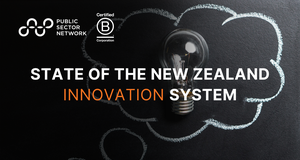The Future of Learning and Development in Government
Exploring the evolving landscape of learning and development in the public sector, emphasizing the need for continuous learning, technological integration, and strategies to address immediate skills gaps while fostering long-term professional growth.


As the public sector faces rapid changes driven by technological advancements and evolving workforce needs, it is imperative to rethink how we approach learning and development. Continuous learning is no longer an option; it’s a necessity for government employees to adapt and thrive. This article explores key trends, strategies, and tools that will shape the future of learning and development in government.
Shifts in Learning and Development
The next five years will witness significant shifts in learning and development within the public sector. With the rise of artificial intelligence (AI) and other emerging technologies, there will be a greater emphasis on digital literacy and technological competence. Public sector organizations must prepare for these changes by investing in adaptive learning platforms that can provide personalized learning experiences tailored to individual needs.
Moreover, the focus will shift from traditional training methods to a more blended approach that combines online learning with in-person interactions. This flexibility will enable public sector professionals to engage with content at their own pace while still benefiting from collaborative discussions and networking opportunities.
Fostering Continuous Learning and Overcoming Resistance
Creating a culture of continuous learning in the public sector, particularly in traditional bureaucratic environments, can be challenging. Key strategies to foster this culture include:
Leadership Support: Leaders must champion continuous learning initiatives and model lifelong learning behaviors. By prioritizing development opportunities, they signal the importance of skill enhancement to their teams.
Employee Engagement: Involving employees in the decision-making process regarding their learning paths increases buy-in and commitment. Regular feedback mechanisms can help organizations understand employee needs and tailor offerings accordingly.
Overcoming Resistance: To address resistance to change, it’s crucial to communicate the benefits of learning initiatives clearly. Highlighting success stories and demonstrating the value of new skills in real-world applications can help mitigate apprehension.
Balancing Immediate Skills Gaps with Long-Term Development
Public sector organizations often face the challenge of balancing immediate skills gaps with the need for long-term talent development. One effective approach is to implement a dual strategy that focuses on:
Short-Term Training: Quick, targeted training sessions can help close urgent skills gaps while longer-term strategies are developed. This approach allows organizations to remain agile in the face of changing demands.
Long-Term Development Plans: Establishing clear career pathways and development programs encourages employees to invest in their growth. Partnerships with external training providers can enhance these programs by offering specialized training that may not be available in-house.
Technology and Personalized Learning
The integration of technology in learning and development is reshaping training within the public sector. Personalized learning paths and adaptive learning platforms allow employees to progress at their own pace, catering to different learning styles and preferences.
However, ensuring that these tools remain inclusive and accessible to all employees poses a challenge. Organizations must consider:
Equity in Access: Providing equal access to learning resources is crucial. This includes offering training materials in various formats (e.g., videos, written content, interactive modules) and ensuring that all employees have the necessary technology to participate.
Ongoing Support: Continuous support and guidance are essential for employees as they navigate these new learning platforms. Offering mentorship programs and access to learning coaches can enhance the effectiveness of personalized learning initiatives.
Measuring Success and ROI
To ensure that learning and development initiatives are effective, public sector organizations need to establish clear metrics for success and return on investment (ROI). Some effective ways to measure these include:
Feedback and Surveys: Regularly soliciting feedback from participants helps organizations gauge the effectiveness of training programs. Surveys can provide valuable insights into employee satisfaction and areas for improvement.
Performance Metrics: Tracking performance improvements post-training can demonstrate the impact of learning initiatives. Metrics such as employee productivity, engagement scores, and retention rates can provide a clearer picture of ROI.
Best Practices Frameworks: Utilizing established frameworks, such as Kirkpatrick's Four-Level Training Evaluation Model, can help organizations systematically evaluate the effectiveness of their training programs.
Closing Reflection
As we look toward the future, one key takeaway for public sector organizations is the importance of agility and adaptability in learning and development strategies. Embracing new technologies, fostering a culture of continuous learning, and investing in both immediate and long-term talent development are crucial steps to ensure that public sector professionals are equipped to meet the challenges ahead.
In summary, the future of learning and development in the public sector is filled with both challenges and opportunities. By prioritizing continuous learning and leveraging technology, government organizations can create a workforce that is not only responsive to current needs but also prepared for future demands.
- Communities
- Data, Analytics and AI
- Region
-
United States
Published by

Most Popular


















